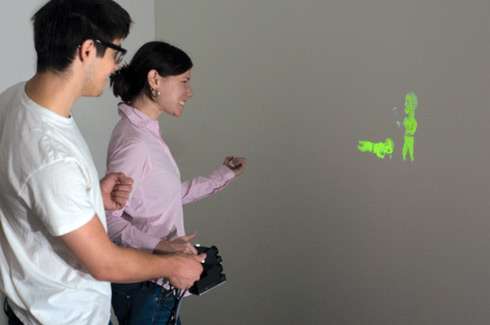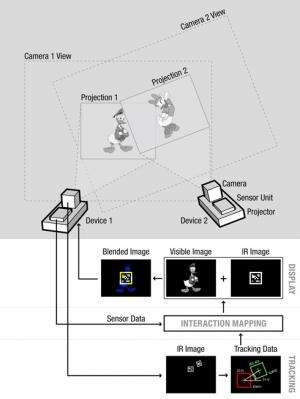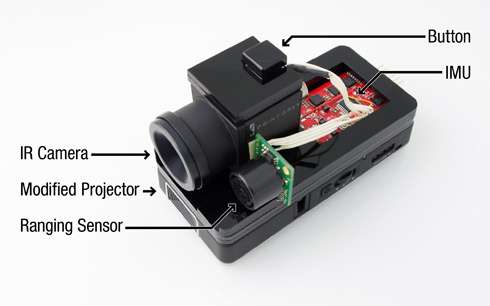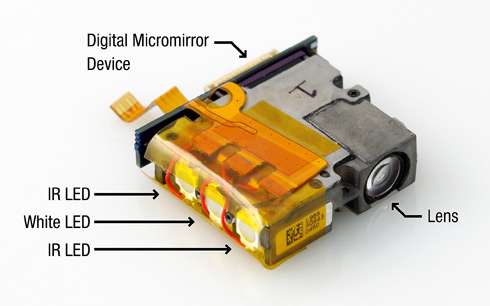SideBySide projection system enables projected interaction between mobile devices

Researchers at Disney Research, Pittsburgh, and Carnegie Mellon University have devised a system called SideBySide that enables animated images from two separate handheld projectors to interact with each other on the same surface.
The system, suitable for games, education and a variety of other applications, is self-contained in special handheld devices. No external cameras or other sensors are required, which enables people to use the projectors to interact with each other anywhere and at anytime. SideBySide also can be used to exchange contact information, or even share data files. The technology can spur a more participatory and intimate style of interaction than is possible with computers or overhead projectors.
"Smartphones have made it possible for us to communicate, play games and retrieve information from the Web wherever we might be, but our interaction with the devices remains a largely solitary, single user experience," said Karl D.D. Willis, a Ph.D. candidate in computational design at Carnegie Mellon and a lab associate at Disney Research. "Now that handheld projectors have become a reality, we finally have a technology that allows us to create a new way for people to interact in the real world."
The handheld projectors are hybrid devices that emit both visible and infrared light and contain a camera for monitoring the projected images, a ranging sensor and an inertial measurement unit.

The infrared channel plays a key role in enabling interaction. It is used to project markers that help the system recognize when the images are moving or overlapping and to communicate information between the devices.

The researchers have developed a number of applications to demonstrate the capabilities of the technology. Games include Boxing, in which matches are performed without a ring; Cannon, in which players knock a stack of bricks off a platform by firing a cannon ball from one screen to another; and Gorilla, in which one player uses a plane and a net to catch the other player's gorilla. They also have developed a 3D viewer, which allows two users to control and explore a 3D model together, and applications for exchanging contact information and transferring files. A question & answer application can be used to teach basic vocabulary to young children.

Willis will discuss SideBySide on Wednesday, Oct. 19 at the Association for Computing Machinery's Symposium on User Interface Software and Technology (UIST) in Santa Barbara, Calif. Conference organizers already have presented SideBySide with UIST's best paper and best demonstration awards. In addition to Willis, the SideBySide development team included Ivan Poupyrev and Moshe Mahler of Disney Research and Scott Hudson, professor in Carnegie Mellon's Human-Computer Interaction Institute.
More information: www.disneyresearch.com/researc … i_sidebyside_drp.htm
Provided by Carnegie Mellon University




















